The Malt was frankly suspicious when informed that today’s jaunt would take him to the end of the road.
For a dog who soaks up luxury and leisure pursuits, that sounded a bit too challenging to Max.
But after a few rounds of hold-the-cookie-on-your-nose, the wee Furbeast was ready for some exploration of his island home.
Today’s end of the road destination was Mokulēʻia.
Mokulēʻia means “isle of abundance.” It’s a small, rural town located on the western side of Oahu.
There are probably 2,500 people living there; it’s about as remote as one gets on Oahu. It’s where the road ends, literally, as one tries to circumnavigate Oahu counter-clockwise.
There was once a railroad around this far western point of Oahu and the dirt road used to go all around this part of the island, too.
I drove it in a beat up 1949 Chevy as recently as the late 1960s (OK, that’s not very recent) but erosion caused the path to slide into the ocean.
One can still ride bikes or hike around the coast but no vehicles are allowed.
Due to its remote tropical setting, that rather strange television series “LOST” filmed several scenes on the beaches of Mokulēʻia.
Fans will recall scenes of the beached fuselage from the fictional Oceanic Airlines flight 815.
The prop airplane drew a lot of attention as it sat on the beach for months because the crash appeared so authentic.
The television series Hawaii Five-0 also uses this area in various episodes where a wild coast is required.
The Mokulēʻia beaches are still a bit of an Oahu local secret.
The folks who come out here are self-contained. They don’t seek or want food stands or souvenir stores.
They bring tents and wind shelters, giant coolers and barbecues ranging from little hibachi to full scale Weber gas grills that they carry off the back of their pick up trucks.
It’s a mix of local folk and military folk with a smattering of tourists and all intermingle, generally with great success and mellow moods.
Mokulēʻia is also known as home of the Dillingham Airfield, formerly Air Force Base, which is a joint military/civilian airport currently used for glider riders and skydiving. Its military use is as a training location for night vision devices.
The airfield’s history goes back to the 1920s when a communications station called Camp Kawaihapai was established. At that time there was a railroad along the southern and western ends of Oahu and it was used to transport mobile coast artillery to the site.
By 1941, the Army leased additional land and established Mokulēʻia Airstrip with Curtiss P-40 fighters deployed there when the attack on Pearl Harbor took place.
After the Pearl Harbor attack, the runway was paved and extended to 9,000 feet long. By the end of World War II, Mokulēʻia Airfield could handle B-29 Superfortress bombers and was the longest air strip on the island.
In 1948, the airfield was inactivated and renamed Dillingham Air Force Base. Nike missiles were installed in the 1950s, one of four sites located on the island.
The Nike-Hercules guided missile was a nuclear-capable weapon but was obsolete by 1970.
In 1962, the State of Hawaii leased Dillingham for general aviation use. In the 1970s the base was transferred from the Air Force back to the Army.
The state signed new leases with the Army in 1974 and 1983. In the 1980s, hangars, a control tower, and a fire station were built.
Adjacent to the airfield is the Mokulēʻia Forest Reserve.
The Reserve is home to the Mokulēʻia Trail, a 10 mile trail that offers scenic views and is rated as difficult.
The trail is primarily used for hiking, mountain biking and road biking and is accessible year-round.
Dogs are also able to use this trail although certain porky Maltese dogs have been known to faint at the idea of a long outdoor hike.
One mile beyond the airfield is the entrance to Kaʻena Point, the westernmost tip of land on the island of Oahu. Spelling and pronunciation count with this name.
Kaʻena with the ‘okina (the little backward apostrophe) can mean “the heat” or “the hottest part of the flame” and refers to those things that are glowing, raging, enraged.
On the other hand, kaena without the ‘okina means to brag or boast, to be conceited or proud. If you have hiked Kaʻena you will appreciate the little backwards apostrophe – Kaʻena can indeed be hot as the gates of Hades and you will not be doing much boasting.
Though long uninhabited, Kaʻena was once an important community for fishing, feather-collecting and salt-making.
Nowadays, Kaʻena is a State Park and a nature preserve and a very significant cultural location.
It represents to Hawaiians the place where the souls of the dead leap off to join their ancestors in the next realm of their existence.
There are several such leaping off spots on the Hawaiian Islands and each is a special place full of stories and legends and, frankly, creepy as hell as night.
Kaʻena is also a living example of native Hawaiian ecology.
The area is abundant with native coastal plants and a total of 11 plants found at Kaʻena are on the Federal endangered species lists.
The reserve is a haven for the rare Hawaiian monk seal, and honu (Hawaiian green sea turtles) can often be found resting along the coastline.
In the deep waters, just off the point, spinner dolphins play and hunt for food. During winter and spring months, humpback whales are a familiar sight offshore.
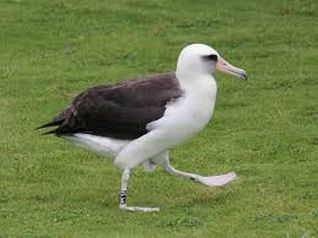
The Layson Albatross. Though found from Japan to Alaska and across the Northern Pacific, 99.7% of all nesting sites are in Hawaii.
Kaʻena is also home to birds such as the Laysan albatross and wedge-tailer shearwater and of course there is an abundance of fish of indescribable color and variety. For those seeking a little turf with their surf, there are plenty of mongooses and feral chickens darting across the roads, too.
After wandering around the road’s end, we watched the gliders for awhile but alas there were no parachute jumpers to be seen. So after some beach exploration the AJF announced she would like to stop at Kualoa Ranch for a bite, so we bundled into the car and headed 50 miles east where we enjoyed a pleasant lunch which, of course, included feeding Max his fair share of grass-fed local burger.
And then came bath time.
Categories: Max's Stories
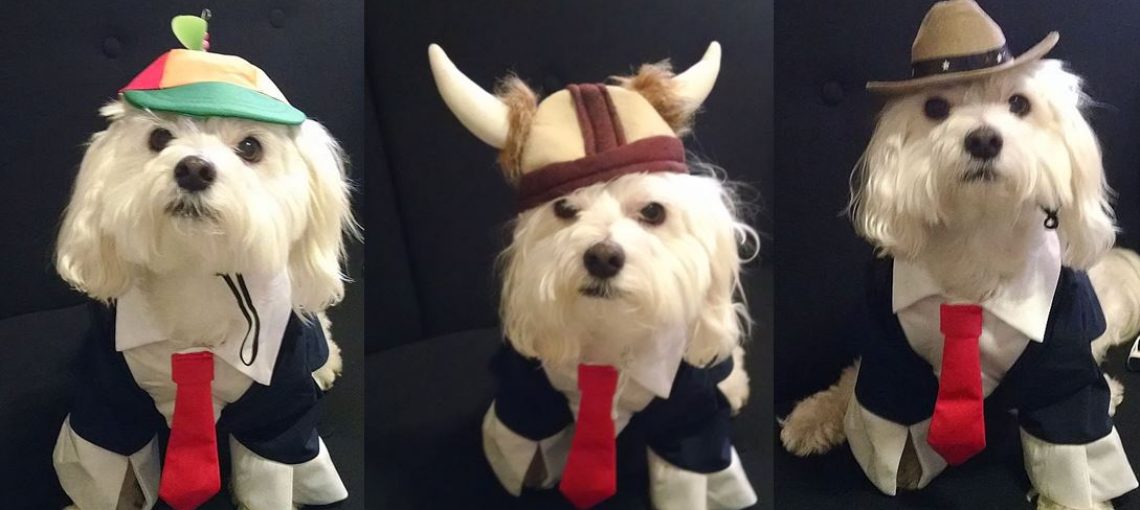
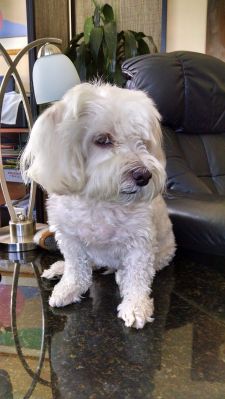


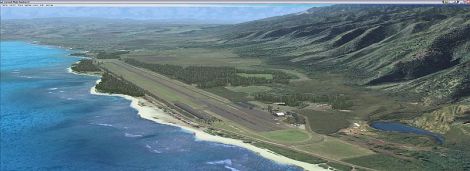
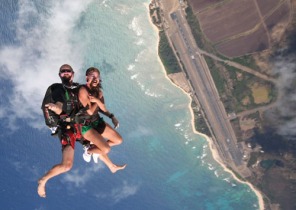




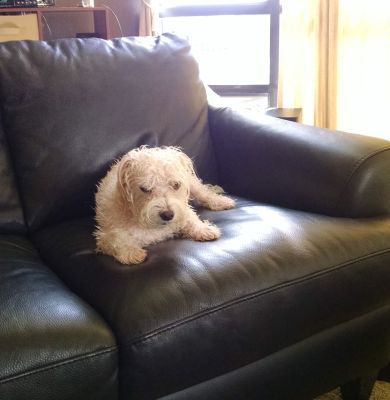
That is so beautiful! As is Max!
LikeLiked by 1 person
Max blushes which results in a slightly pink dog. It is a pretty area; the color of the water is extraordinary.
LikeLiked by 1 person
What an expressive guy you are, Max. Yeah, that last picture pretty much says it all, but you look great.
LikeLiked by 1 person
The announcement of “bath time!” is always met with a sullen expression. He doesn’t run away; he just hunkers down and glares at me. Later I may casually look up and see his “you are dead to me” look. If that is what you meant by “expressive”, the Malt is indeed expressive – in a small, white hateful sort of way.
LikeLiked by 2 people
If I were Max, I’d also have been a little suspicious about the destination, but all’s well that ends well. Oops sorry, I forgot that this adventure ended with a bath 😀 The island residents certainly have a history steeped in spiritual beliefs. Very interesting and a good read as usual.
LikeLiked by 1 person
Unlike Genis, at least we do not have to consider crocodiles. A mongoose doesn’t seem anywhere near as threatening as the beasties that you guys encounter on your treks into the back country.
LikeLiked by 1 person
We just have to tread lightly and be aware that Africa does not belong to us, but to the beasties. No fear, though, that we will reach the end of the continent unexpectedly … bwahaha
LikeLiked by 1 person
Tex walked almost three miles with me Saturday morning (about three-quarts of the way through he stopped walking and insisted on being carried). He then proceeded to sleep the rest of Saturday and all of Sunday.
Mokulēʻia looks like a great place to hike.
LikeLiked by 1 person
Max has also mastered the “I’m exhausted, now you must carry me” routine which goes well with the “sand is too hot for my precious paws that are made of delicate papier-mache” scenario. I’ve often remarked that his mean time for survival in the wilderness alone would be measured in minutes. As for napping, well, it sounds like we both have professionals in the house.
LikeLike
Max certainly isn’t stupid and was well within his right to be apprehensive about visiting the end of the road and as it turned out his concerns were warranted. There was a bath at the end of the road. Our dogs desperately need baths but it’s been raining for weeks and so they’ve had a reprieve.
I folowed a few really good blogs through the A-Z Challenge. One was set in Kyoto, which now reminds me of the AJF and also another set in the Galapagos Islands…among others. I had a real ball during the challenge and really extended myself but feel a bit pooped now…especially after writing quite an emotional piece today about the Australian drug smugglers who were executed in Bali last week.
Hope things are going well over there.
xx Rowena
LikeLiked by 1 person
Unfair to side with the dog. The bath was fair trade for a day of adventure and local beef burger. I failed to mention that the bath was an imperative because Max has discovered the fragrant joys of horse poop and there is no shortage of that commodity at Kualoa Ranch. I’ve been following your A-Z challenge (which you probably pronounce A to Zed) and lurking on the posts – well done, it’s more discipline than I could ever demonstrate. We are all still vertical over here so no complaints.
LikeLike
I’d stay clear of that locality. The burgers eat grass and who knows what else (like birds and little white canines).
LikeLiked by 1 person
A mongoose would enjoy a tender (albeit outspoken) little avian snack about your size. Shoots, those albatross are big enough to pick up a Malt and carry him off the jumping point to a new existence, probably one with fewer baths.
LikeLike
Every cloud has a silver lining.
LikeLiked by 1 person
I can totally see walking off to the next life at Kaʻena State Park. As always, your beach photos are splendid and make me want to book the next US Airways flight due west–far west! Cheers on another pawsome post, bathtime notwithstanding and with condolences to Max on the indignity of bathing after a glorious romp in equine manure. 🙂
LikeLiked by 1 person
The seas at the point are unusual in that two currents come directly in opposition to each other and create strange wave patterns. It looks like a fitting place to change existence, like something is happening just under the surface that will take you in a new direction. This wave action also explains why so much sea life is found at the point. It’s not unusual to see turtles, whales, dolphins, sharks and rays all in a single day while hiking along the promontory.
LikeLiked by 1 person
You’re killing me with the description. Now I definitely have to call US Airways!
LikeLike
OMG, I just burst out laughing at that last picture. Betrayed. Exactly how Virginia Max feels about the whole bath thing. A very interesting post. I hope those eleven endangered plants gain a tremendous foothold and continue to thrive.
LikeLiked by 1 person
What is it about these animals that they prefer to be itchy and stinky? It’s not that a bath hurts anything except their fragile sense of dignity and one can tell they are more comfortable after a good scrubbing. Plus, they get treats just for standing round as warm water and nice sudsy soap is applied and washed off. Oh well, what can one expect of a beast that thinks of horse poop as an aphrodisiac?
LikeLike
Grass-fed burger? Being carried when his paws get hot? He’s living it up. Could I say that my feet are Kaʻena, if they are inflamed and hot and burn and cause me to be enraged? That parachute jumping pic turns my tummy!
LikeLiked by 1 person
Yes, as a matter of fact, wāwae kaʻena would mean hot, inflamed feet. Pronounce it “vaay vay kah-enna” There are no separate words for “foot” and “feet” in Hawaiian.
I imagine wahine kaʻena could refer to an enraged woman but I’ve never seen that expression. Typically in Hawaii, an enraged woman is simply called “wife”.
LikeLiked by 1 person
Those jumping off points….is there any particular feature which makes them so, or are they just jumping off points for different groups?
I once had a fauve de Bretagne which would set out for a walk and them subside in a large furry lump when at a distance from home….enough to give you a hernia carting her home.
She didn’t like bathtime either: it made it necessary for her to go outside in search of suitably mature dead carcasses in which to roll to restore the natural order of things.
I wouldn’t care to face Max given the expression in the last photograph…if looks could kill…
LikeLiked by 1 person
According to Hawaiian folklore, after a person died, the soul would find its way to a “leina a ka uhane” meaning literally “leap of the soul” such as the one at Ka’ena Point. The spirit, unless driven back by other spirits as unworthy, would go to the headland and leap into the land of the dead. Once the jump was made that spirit could never return to the body it had left.
Depending on class, the quality of person and the righteousness of his life, each spirit took different journey and faced different challenges enroute to the jumping off spot and entered a new world with different characteristics.
Integral to all was the notion that the sea nurtures all life and makes possible the progression from lower life forms to, eventually, human beings and to the sea therefore one must ultimately return.
The jumping off spots are almost always on steep bluffs on the Northwest side of the islands looking westward over the ocean. One often finds a breadfruit tree near the leina a ka uhane which served as a gathering place to prep for the jump.
Matters of death and transition to the spirit world are incredibly complex for Hawaiians and I don’t pretend to know much on the topic but it is fascinating stuff.
As to fauve de Bretagne, I had that once but a couple of doses of antibiotics cleared it right up. snorf, snorf.
LikeLiked by 1 person
Great post. My favourite bits are the final Max photo and the okina !
‘ “, ` * ~ yet another bit of type that I can’t do on my machine.
LikeLiked by 1 person
We see the sullen, hateful Malt expression frequently. He does not take well to having his objectives frustrated and shows it. The positive side is that he has a short memory and in a few minutes will be happily running around and searching for Hedgie, his toy hedge hog.
LikeLike
I love the history. Max is so cute. 😄
LikeLiked by 1 person
It’s all a deception, Kat, designed to soften the heart of the unsuspecting into providing edible treats. He can play the cute card well and people fall for it all the time. He’s small but crafty.
LikeLike
Burgers and nose balancing tricks. I’ve not had either of them.
LikeLike